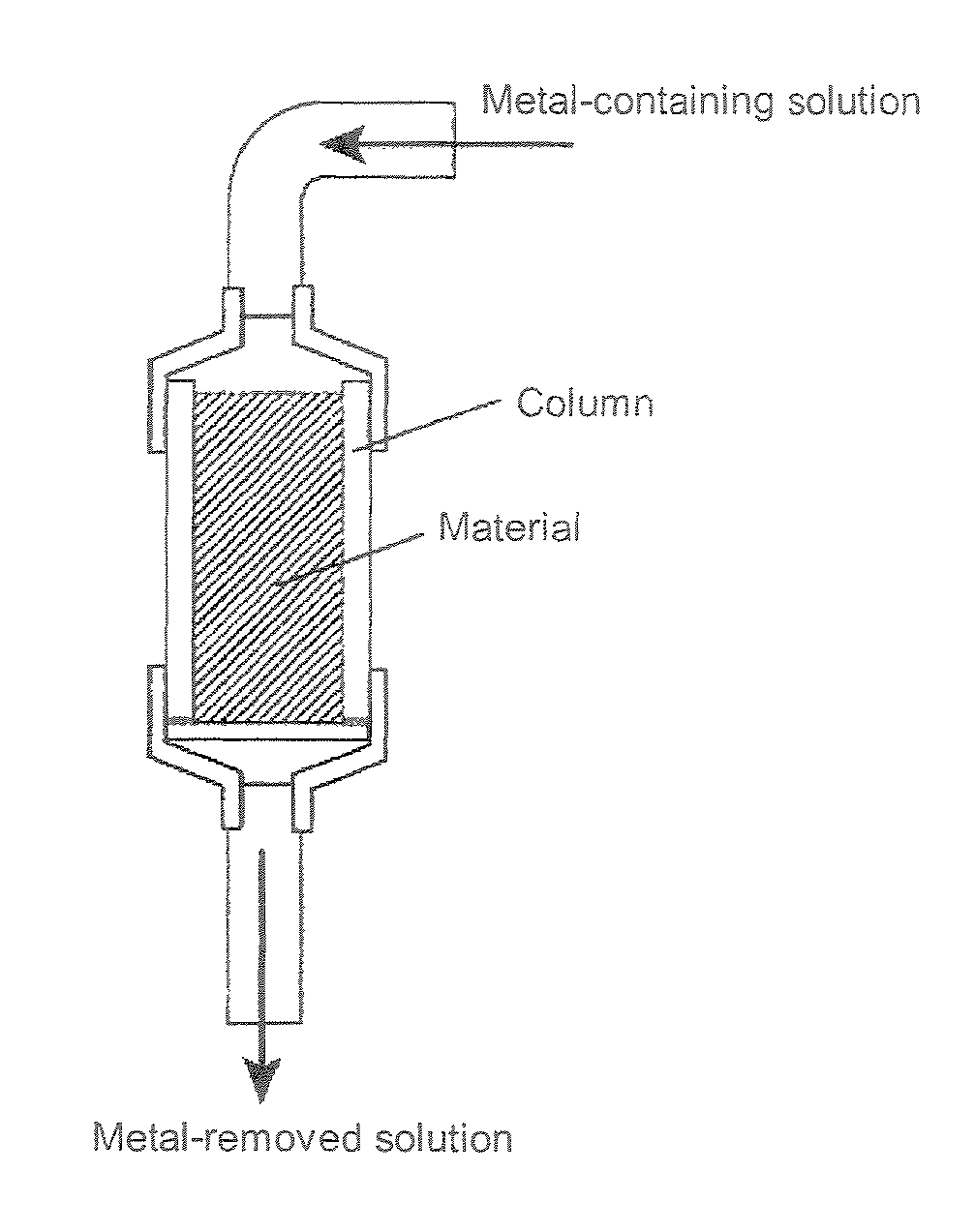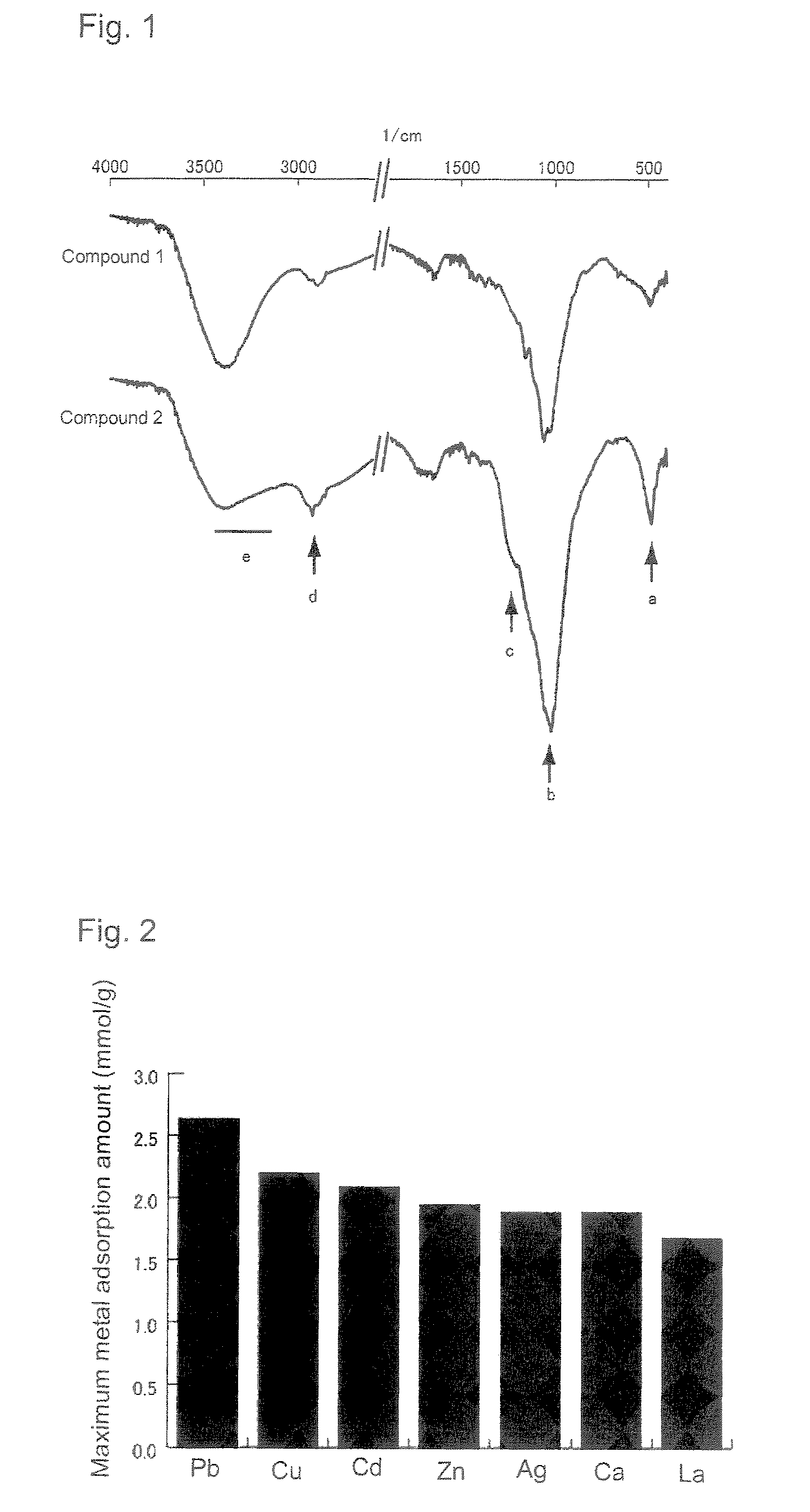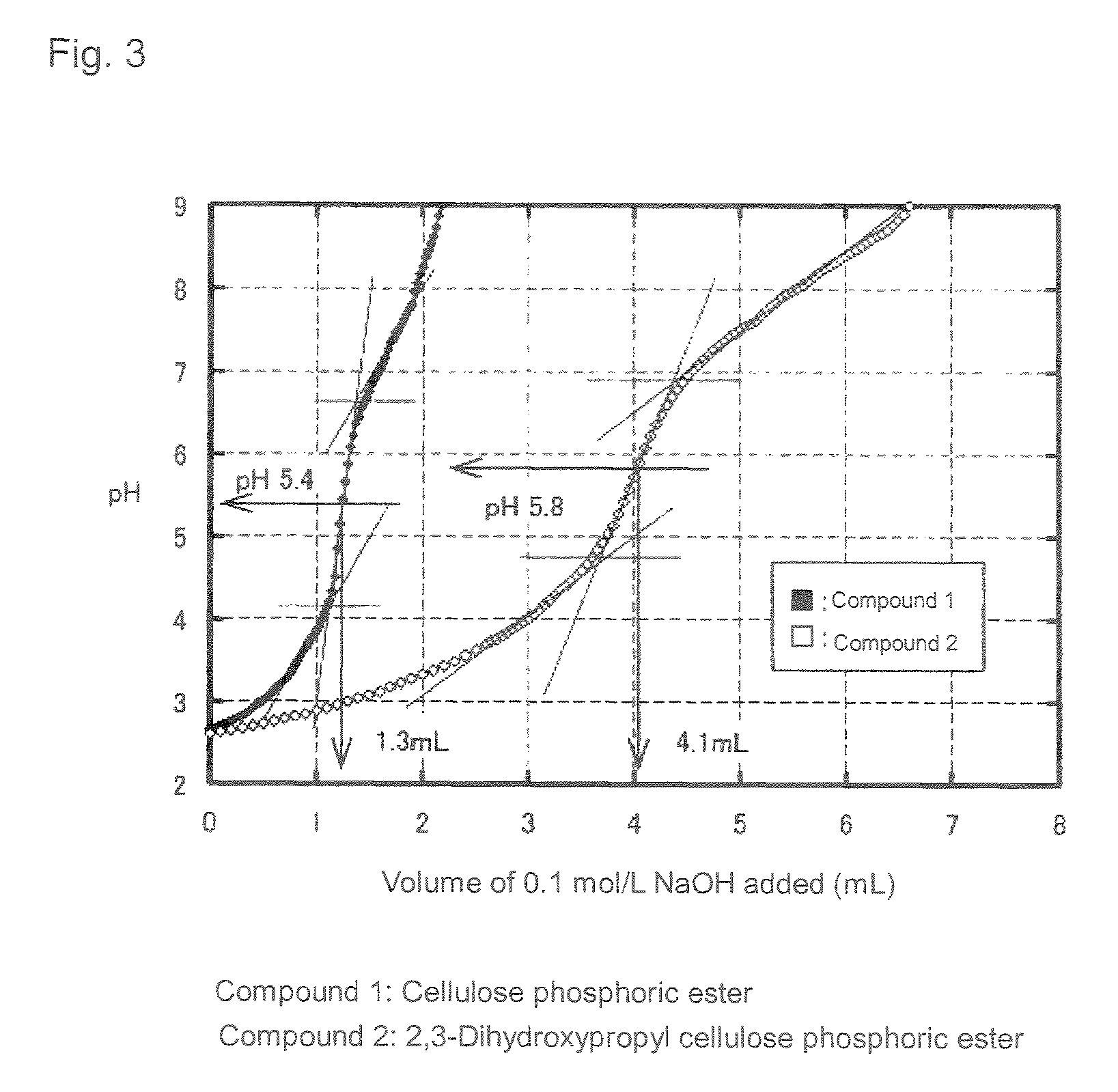Phosphoric ester of cellulose derivative and metal adsorbent comprising the same
a technology of cellulose derivative and phosphoric ester, which is applied in the direction of solvent extraction, group 5/15 element organic compounds, separation processes, etc., can solve the problems of reduced diffusion rate of metal ions and a regenerating agent into the resin, increased minimum adsorption level, and limited mode of use of metal adsorbent, etc., to achieve high metal adsorption rate per unit weight, high mechanical strength, and high metal adsorption performance
- Summary
- Abstract
- Description
- Claims
- Application Information
AI Technical Summary
Benefits of technology
Problems solved by technology
Method used
Image
Examples
example 1
Production of 2,3-Epoxypropyl Cellulose
[0046]α-Cellulose (1.5 g) was added to dimethyl sulfoxide (90 mL) and was caused to swell at 60° C. for two hours. A 28-wt. % sodium methoxide methanol solution (60 mL) was added to the swelled cellulose whereby the cellulose was alkalinized at room temperature for two hours. Subsequently, the mixture was filtered, and the separated alkalinized cellulose was added to a mixture of dimethyl sulfoxide (100 mL) and 1-chloro-2,3-epoxypropane (200 mL), and the system was allowed to react at 50° C. for two hours. The formed matter was washed and dried, to thereby yield 2,3-epoxypropyl cellulose.
example 2
Production of 2,3-Dihydroxypropyl Cellulose
[0047]2,3-Epoxypropyl cellulose (1 g) was added to water (20 mL), and perchloric acid was added to the mixture so as to adjust the pH to 2. Subsequently, the mixture was allowed to react at 50 to 60° C. for five hours for hydrolysis. The product was washed with water and dried, to thereby yield 2,3-dihydroxypropyl cellulose.
example 3
Production of 2,3-Dihydroxypropyl Cellulose Phosphoric Ester (Through Phosphorylation by Use of Phosphoryl Chloride)
[0048](1) Phosphoryl chloride (8 mL) was added to 2,3-dihydroxypropyl cellulose (1.0 g), and diammonium hydrogenphosphate (0.131 g, 0.001 mol) was further added. To the mixture, water (900 μL) was added dropwise with stirring. The mixture was heated at 70° C. for six hours, and the thus-formed intermediate was added to water (20 mL). The mixture was allowed to react at 50° C. for one hour for hydrolysis. The formed matter was washed with water and dried, to thereby yield 2,3-dihydroxypropyl cellulose phosphoric ester.
[0049](2) The thus-produced 2,3-dihydroxypropyl cellulose phosphoric ester, cellulose phosphoric ester obtained by phosphorylating natural cellulose fiber (α-cellulose), and cellulose serving as a starting material were subjected to element analysis. The results are as follows:[0050]2,3-Dihydroxypropyl cellulose phosphoric ester: C 26.42 wt. %, H 4.98 wt. ...
PUM
| Property | Measurement | Unit |
|---|---|---|
| temperature | aaaaa | aaaaa |
| temperature | aaaaa | aaaaa |
| temperature | aaaaa | aaaaa |
Abstract
Description
Claims
Application Information
 Login to View More
Login to View More - R&D
- Intellectual Property
- Life Sciences
- Materials
- Tech Scout
- Unparalleled Data Quality
- Higher Quality Content
- 60% Fewer Hallucinations
Browse by: Latest US Patents, China's latest patents, Technical Efficacy Thesaurus, Application Domain, Technology Topic, Popular Technical Reports.
© 2025 PatSnap. All rights reserved.Legal|Privacy policy|Modern Slavery Act Transparency Statement|Sitemap|About US| Contact US: help@patsnap.com



